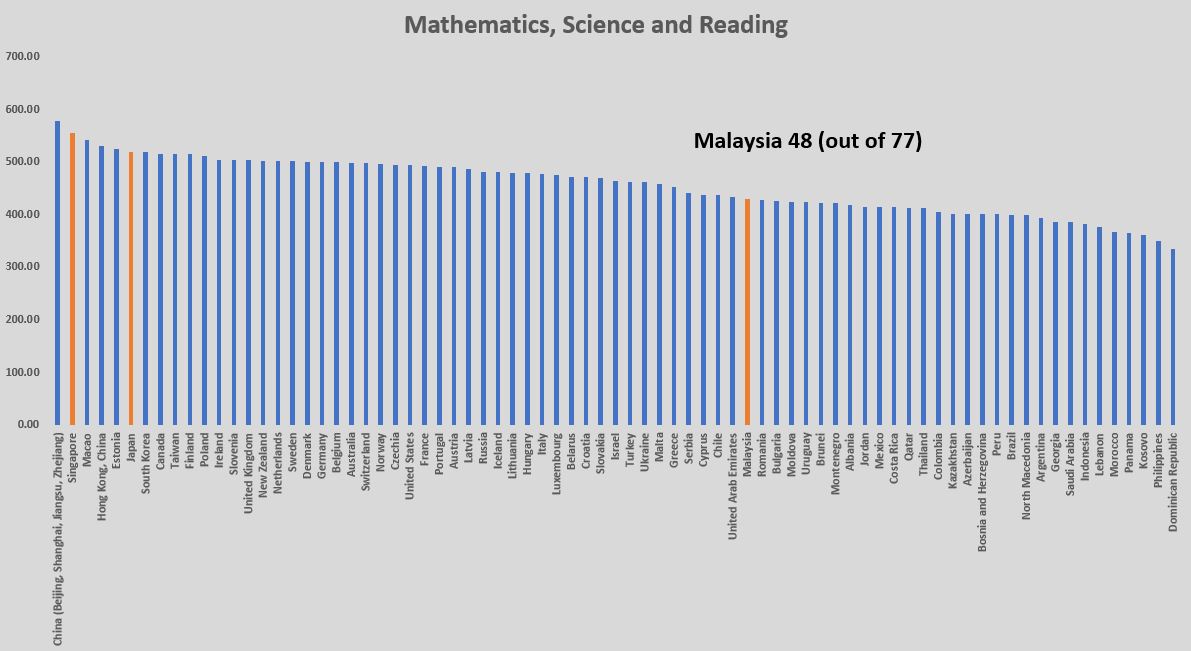IN the first video in the Breaking Down the Issues series on education in Malaysia, we explored the history of schooling in our country and how we have arrived at a situation where the system is more fractured than ever, with divisions between the haves and have-nots, and also between race and religion.
The education system is important to Malaysia. It has five million students, employs 500,000 staff, and represents 20% of the government’s budget.
Syed Saddiq Syed Abdul Rahman, the Muar MP and former youth and sports minister, makes the point that our education system is not underfunded. Investment in this critical area is one of the highest in Southeast Asia, with Malaysia spending 16% of its gross domestic product on education. This compares favourably with Singapore (11% of GDP) and Japan (7% of GDP). But, does this investment provide a good return? Not at the present time, and certainly not when compared with Singapore and Japan.
The figure below shows the latest Programme for International Student Assessment rankings by country when looking at mathematics, science and reading. Malaysia is below average at 48 out of 77. Singapore is second in the rankings, and Japan, sixth.

How can we improve our education system? Five key areas that need tackling have been suggested:
1. How can we improve the decline in quality?
2. How do we address our polarised education system?
3. Dual-language proficiency is poor. How do we raise the level of English proficiency?
4. We need to revise our syllabus, with a focus on thinking, soft skills, and areas such as financial literacy. There should be less emphasis on religion.
5. We need to address our digital roll-out.
A McKinsey report also proposes three key areas that need to be addressed, which are supported by the speakers at our recent education webinar, as seen in the video.
Firstly, we need quality teachers, which might mean having to let go of some of our underperforming educators, and letting younger, more enthusiastic ones take the lead.
Secondly, there should be a development programme in place so that teachers can continually develop themselves into ever-more-effective instructors. The school principal should also develop themselves so that they can demonstrate leadership and run their school in a way they believe is best for students.
Thirdly, the systems and support should be improved so that every child has the backing they need to reach their full potential.
Unfortunately, previous recommendations to the Education Ministry have largely fallen on deaf ears.
Perhaps now is the time to address our education issues rather than using them as a political/religious football.
Watch the second of our two-part Breaking Down the Issues series on education, and let us know what you think by emailing us at BDI.SekharInstitute@petragroup.net.
This project is brought to you by advocacy and research group Sekhar Institute together with the Good Capitalism Forum, which promotes responsible social capitalism, and Malaysia’s hottest news portal The Vibes. – The Vibes, August 15, 2021
